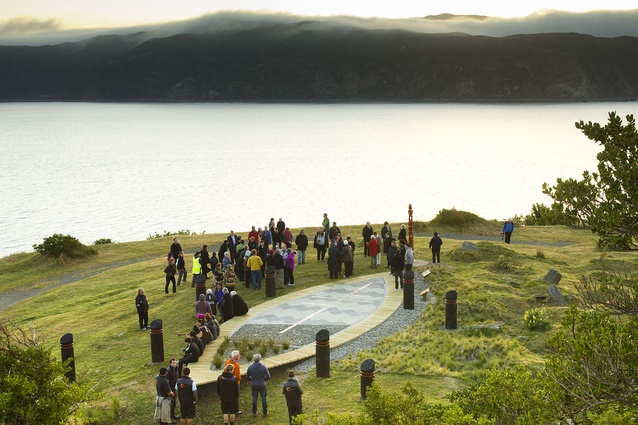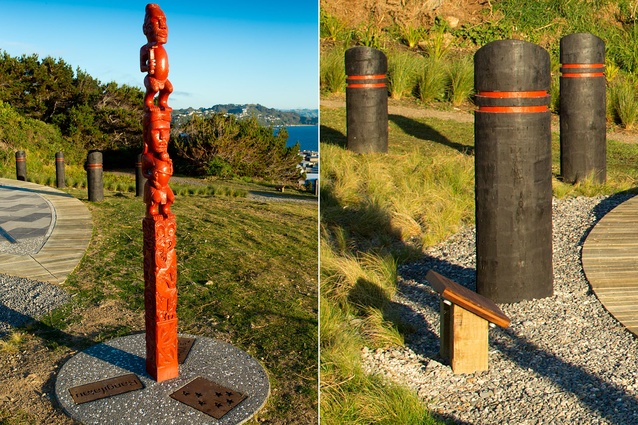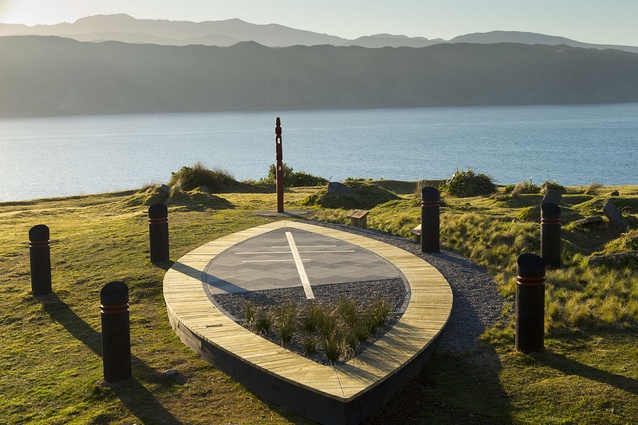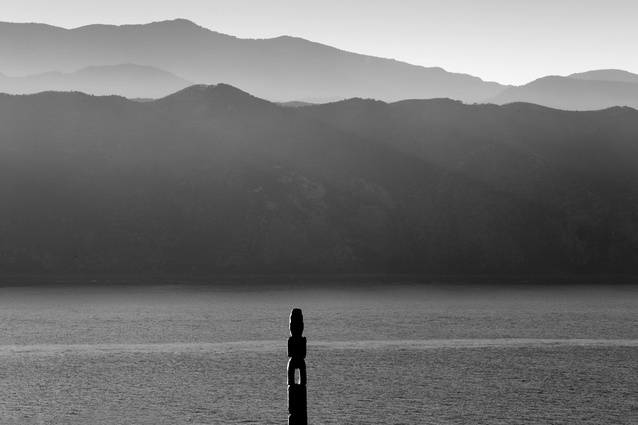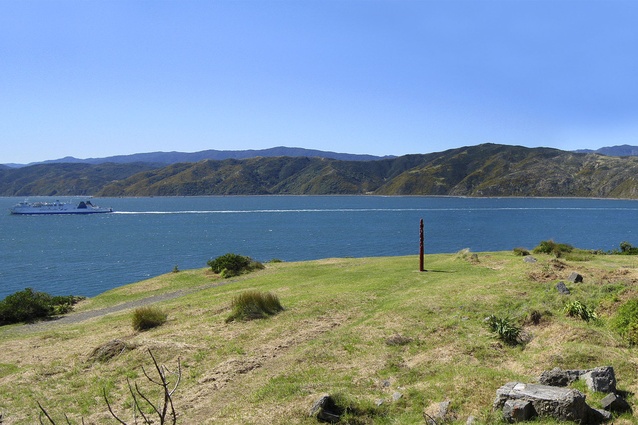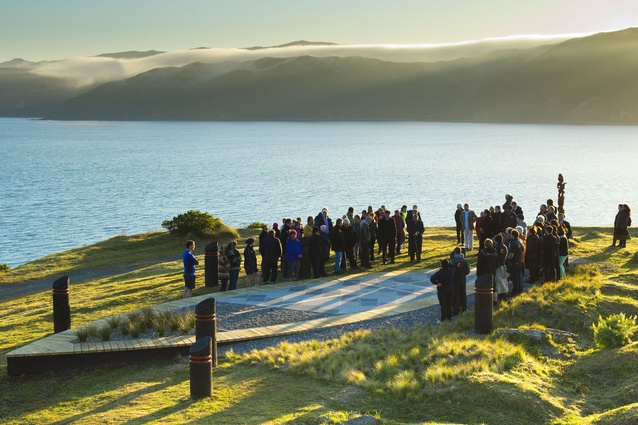Orauiti Reserve
Up hill from the Pass of Branda in Seatoun steep steps and a pathway lead over the cliff top through Oruaiti Reserve to the Oruaiti Pã site at Point Dorset. The views are worth braving the chill southerly that bowls in from Cook Strait, and today a few locals are out running, or walking their dogs. The area is well used by the community says Wellington City Council (WCC) landscape architect, Charles Gordon. We pass several bunkers on the way up the hill - remnants of two world wars - so the area, once called Point Dorset Reserve, is layered with Maori and European military history.
The striking form of a mythical waka designed by Gordon marks the position of the pa that commanded a strategic position for local Maori. The waka is an abstract, symbolic shape built almost flush with the ground.
“There were discussions with the local community and people wanted something quite natural, they didn’t want any big structures on the headland,” Gordon said.
A pouwhenua, which was already in place on the site, stands at the prow, forming the figurehead that leads the waka. The pouwhenua overlooks the Wellington Heads and is aligned to peaks in the distant Orongorongo Mountains. Stars at the base of the pouwhenua refer to matariki and the names Rangitatau and Te Whetu Kairangi point to other important pã or signal points in the area.
“As the protector of the entrance to the harbour it is very representative of the role of the site for centuries,” Gordon said. “It also links to other sites around the immediate coast where there were signal fires that alerted the inhabitants when someone was coming from the south. There was a major pã- at Worser Bay and we think beacons were lit there and at other points on Miramar Peninsula.”
The pouwhenua also links to other Maori sites as part of Te Ara-o-Nga Tupuna (the Path of Our Ancestor) heritage trail.
The simplified waka form has a flat timber surround, representing the hull, then a layer of concrete and shells, for the land. Large black posts on either side represent oars and oarsmen. The pavers within the main body of the waka are arranged in a diamond pattern to represent the traditional korowai or cloak that gave protection from the winds for those who rode in the waka. The gravels and coastal grass planting at the end of the waka are its mooring place and connectionto the land. Swamp totara timbers within the paved pattern symbolise the strength of the waka, its mast, the spine and ribs of the vessel.
Construction of the project began part way through 2013 and was completed late last year. Building the waka was no easy task as there is no power at Point Dorset and the terrain is uneven and steep. A lot of the materials were brought in either by tractor from the beach on the Breaker Bay side or flown in by helicopter, Gordon said.
“The waka has been built to last and is highly constructed. All the wood is screwed rather than nailed; there is a major foundation with posts and reinforcing around the outside of the waka and concrete under the pavers.”
Oruaiti Reserve begins on the beaches of Seatoun and continues around the coast to Breaker Bay. Several tracks from Seatoun Beach and the Pass of Branda have been made more accessible with steps put in so it is possible to do a good circuit ramble. The area, bordered by beaches, rocks and cliffs is climatically harsh being exposed both to the northerly winds, and southerlies from Cook Strait. The coastal plant communities and rock stacks are home to native wildlife such as herons, gulls and lizards and the coast is an important breeding ground for little blue penguins. Hardy coastal plants, particularly Phormium and Coprosma, thrive in the harsh climate.
The area became a recreation reserve in 2000 after the Point Dorset military site was decommissioned. Ownership of 8.337 hectares was transferred to the Port Nicholson Block Settlement Trust (Treaty Settlement) in 2009 and the land is currently co-owned by the Port Nicholson Settlement Trust and the WCC, which administers the reserve. WCC developed a reserve management plan and a landscape plan for Point Dorset Reserve in 2011 and the name was changed to Oruaiti Reserve in 2012.
The waka was part of the landscape development plan for the reserve along the more southern side. Archaeological research in the Point Dorset area suggests evidence of prehistoric Maori occupation in the area, Gordon said.
The area is visually stunning. Te Ara o Kupe, the main walkway has fantastic views out to the entrance of Wellington Harbour and Cook Strait, which is why the site was so important as a strategic defence position to both Maori and European.
The pã site and waka won a 2013 NZILA Distinction Award, and in early 2014 the wider reserve won an international Green Flag Award, joining a global group of parks recognised for their excellence. It is the first park in Wellington to receive this award. ã



